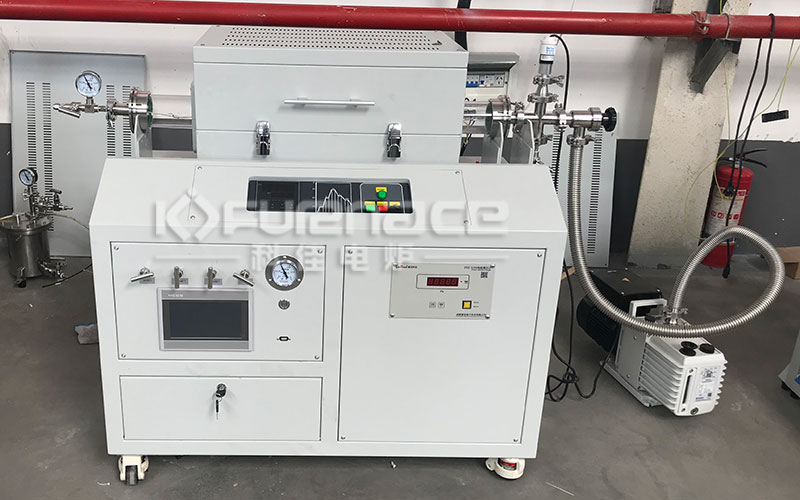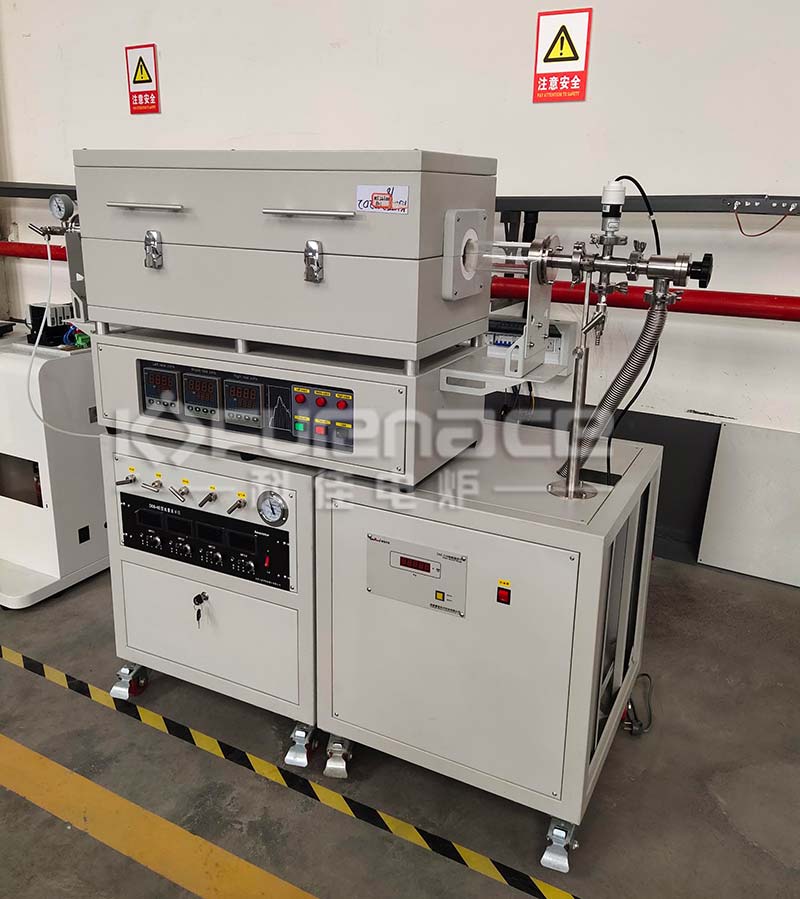The vacuum tube CVD electric furnace is a specialized equipment for conducting high-temperature chemical reactions under vacuum or atmosphere protection conditions. It has a wide range of applications, outstanding equipment performance, safe and reliable operation, energy conservation and environmental protection, and high degree of intelligence. It has shown great advantages in materials science, electronics industry, energy and environmental protection, and other fields. Let’s take a detailed look at the vacuum tube CVD electric furnace below!

Commonly used CVD electric furnaces for silicon dioxide coating (click on the image to view product details)
1. Widely applicable in various fields
Material preparation and thin film deposition
Thin film materials: Metal thin films (such as tungsten and aluminum), semiconductor thin films (such as silicon and silicon carbide), optical thin films (such as silicon nitride and silicon oxide), etc. can be prepared by decomposing and depositing gas-phase precursors. They are widely used in integrated circuits, sensors, optical coatings, and other fields.
Nanomaterials: By regulating reaction conditions, structures such as nanoparticles, nanowires, and nanosheets can be synthesized, which are used in cutting-edge fields such as nanoelectronics and nanomedicine.
Ceramics and Glass: Supports ceramic powder firing and sintering to enhance material density and hardness; Reduce bubbles in glass melting and improve optical transparency.
Electronics and Semiconductor Industry
Integrated circuit manufacturing: Deposition of insulation layers (such as silicon dioxide), metal interconnect layers (such as copper), and doping layers to enhance device performance.
Epitaxial growth: Growing high-quality single crystal layers on the surface of single crystal silicon for manufacturing high-performance power devices and optoelectronic devices.
MEMS manufacturing: Deposition of polycrystalline silicon, silicon oxide and other materials to fabricate micro mechanical structures and sensors.
energy sector
Photovoltaic cells: Preparation of silicon thin film solar cells and compound semiconductor thin films (such as CdTe, CIGS) to improve photoelectric conversion efficiency.
Clean energy: Organic waste is converted into synthesis gas (CO+H ₂) through high-temperature pyrolysis, providing raw materials for fuel cells.
High end manufacturing and protection
Aerospace: CVD silicon carbide coating can resist high-temperature airflow erosion at 3000 ℃ and is applied to rocket engine nozzles.
In the field of nuclear energy, SiC coating covers fuel particles to ensure the safe operation of nuclear reactors.
Automotive industry: Silicon carbide inverters improve charging efficiency and increase battery life.
Environmental Protection and Resource Utilization
Waste disposal: High temperature incineration or pyrolysis can achieve harmless treatment of waste plastics and electronic waste, and recycle precious metals.
Gas sensors: Deposition of metal oxide semiconductor sensitive thin films (such as SnO ₂ ZnO), Detect toxic gases (such as CO, NO ₂).
2. Outstanding equipment performance
Efficient and energy-saving
Double layer furnace shell structure: Equipped with a built-in fan for rapid temperature rise and fall, the surface temperature of the furnace shell is low, and the energy utilization rate is high.
Energy saving materials: Adopting ceramic fiber furnace, the temperature field is balanced and the heating rate is fast, reducing the cost of a single experiment.
Precise control
Temperature control: The PID temperature control system supports multi-stage program temperature control, with a temperature control accuracy of ± 1 ℃ and good stability.
Atmosphere control: Equipped with a Mass Flow Controller (MFC), the gas flow rate is stable to meet different process requirements.
high reliability
Furnace tube material: high-purity corundum tube or quartz tube, sealed at both ends with stainless steel high vacuum flanges to ensure airtightness and high temperature resistance.
Modular design: supports quick replacement of furnace tubes, compatible with multiple specifications, easy to maintain and upgrade.
3. Safe and reliable operation
Security mechanism
Over temperature protection: automatically cuts off the heating power supply to prevent equipment damage.
Power outage interlock: Automatically lock the furnace body in case of sudden power outage to avoid safety accidents.
Safety lock system: Open the door to cut off heating and prevent operators from getting burned.
Convenient operation
Transparent quartz tube cavity: visually observe the sintering status of the sample, facilitating real-time adjustment of process parameters.
Universal wheel design: The furnace body is easy to move as a whole and adapts to the layout of laboratory space.
4. Energy conservation, environmental protection, and intelligence
Environmental design
Clean energy: electric heating to reduce pollution emissions.
Exhaust gas treatment: Optional exhaust gas purification device can be equipped to reduce the impact on the environment.
intelligent control
Internet of Things technology: Real time monitoring of furnace temperature, pressure and other parameters to achieve automated control and remote monitoring.
Data storage and export: The digital instrument displays real-time data clearly and supports temperature rise curve storage and analysis.

Multi temperature zone tubular CVD electric furnace (click on the image to view product details)
Overall, the vacuum tube CVD electric furnace is a commonly used coating heat treatment equipment in university laboratories and industrial and mining enterprise laboratories, and is highly favored. Before choosing, you can communicate the parameters with relevant technical personnel in order to customize a vacuum tube CVD electric furnace that is more suitable for your needs!Click to learn more CVD devices! Or click on online customer service to learn more about product information!